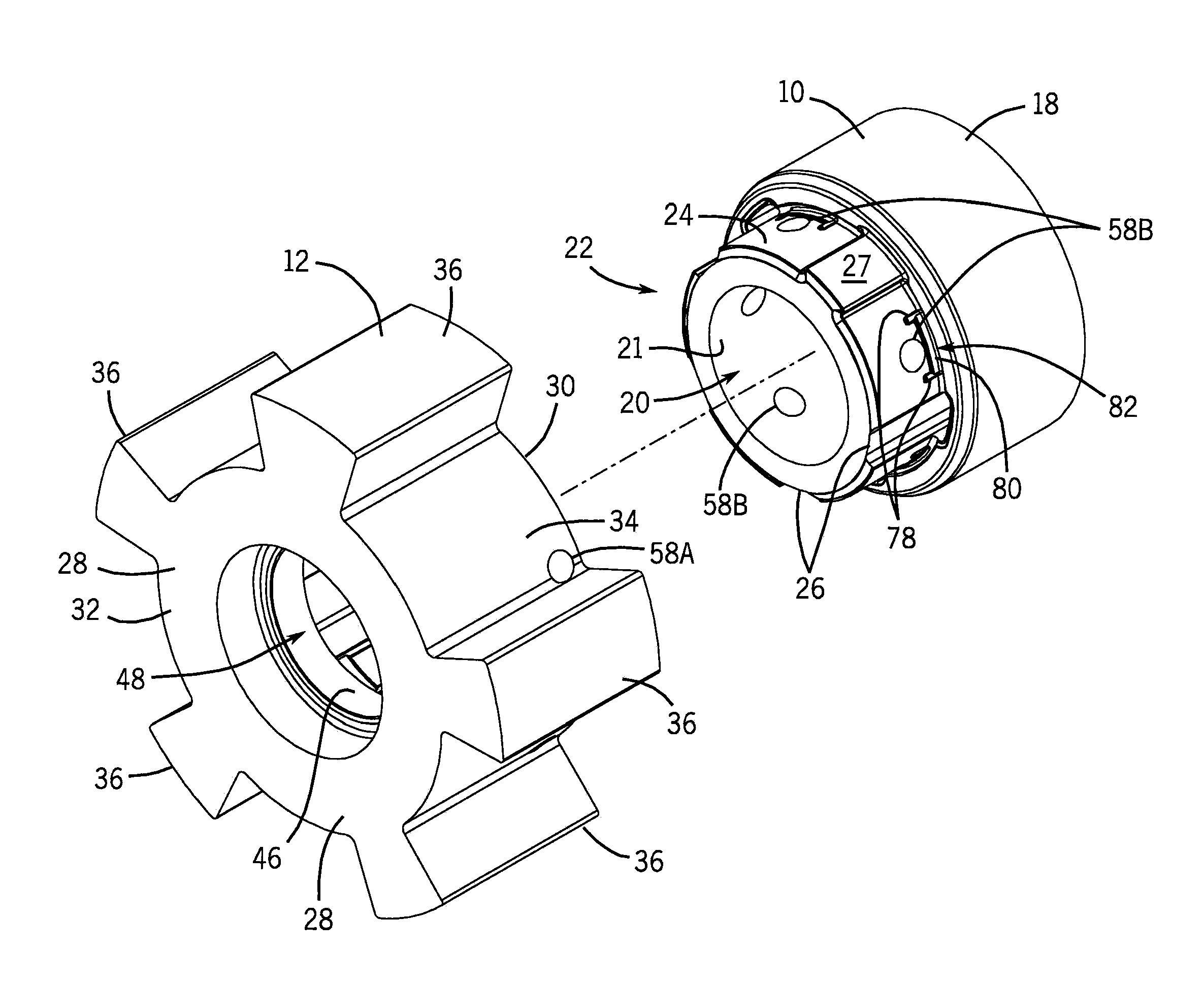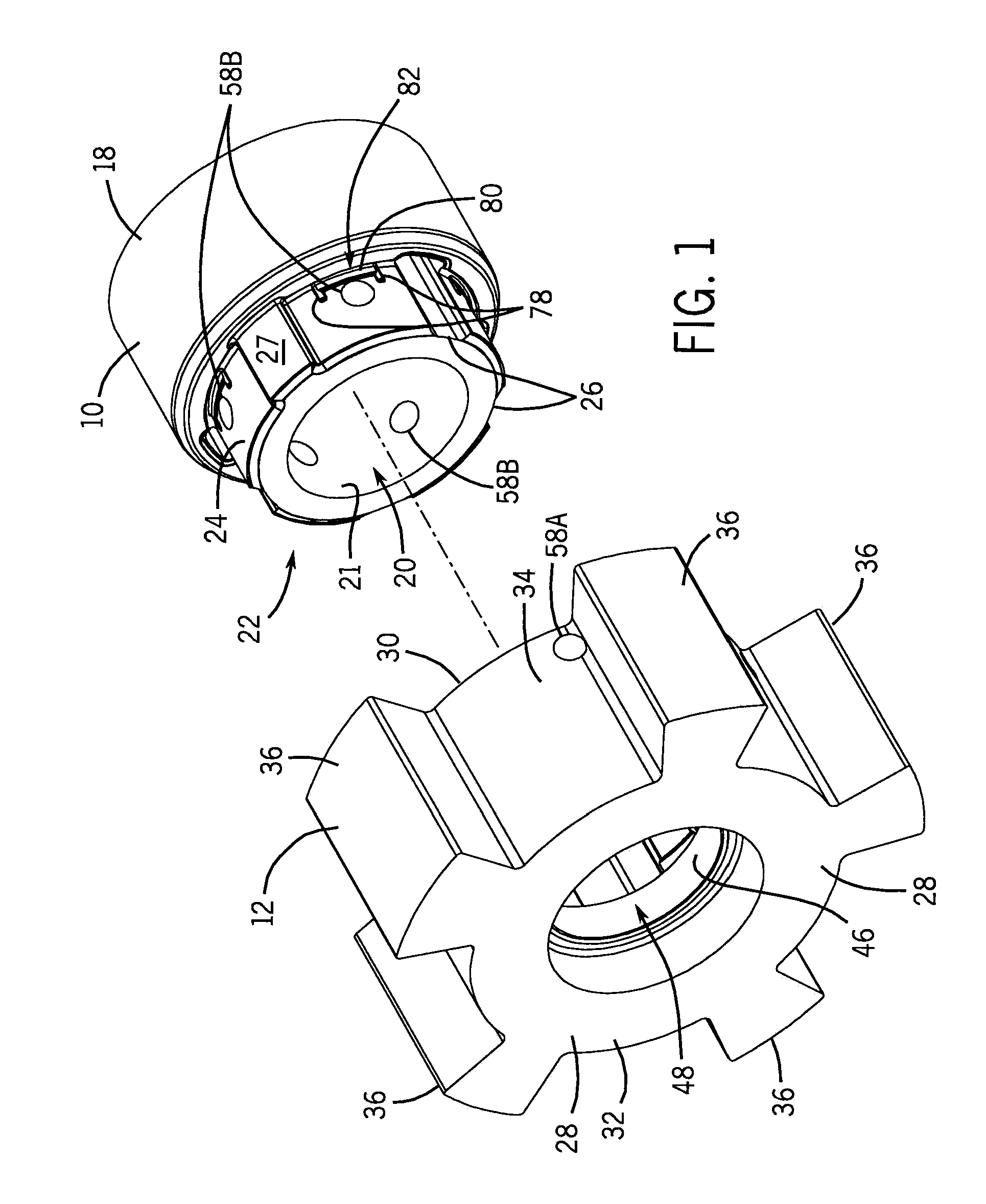Adhesive joining for powder metal components
a technology of powder metal components and adhesives, which is applied in the direction of rod connections, couplings, machines/engines, etc., can solve the problems of difficult fabrication, difficult fabrication, and inability to easily ground the flat surfa
- Summary
- Abstract
- Description
- Claims
- Application Information
AI Technical Summary
Benefits of technology
Problems solved by technology
Method used
Image
Examples
Embodiment Construction
[0020]Referring first to FIGS. 1-2, a blank adaptor 10 and a rotor 12 are shown that can be adhesively joined to one another to form a rotor assembly 14 which undergoes finishing operations to form a finished rotor assembly. The adaptor 10 and the rotor 12 are both formed using powder metallurgical processes. Typically, this includes uniaxially compacting a powder metal and binder material in a tool and die set to form a powder metal preform and then sintering the powder metal preform to form a sintered part. Other steps known to those skilled in the art may also be used during this forming process including, but not limited to, burning off some of the binder material prior to sintering to reduce carbon content, forging the sintered part, coining the sintered part, heat treating the sintered part, and the like. The hole 58, made up of holes 58A and 58B would typically not be formed during compaction or sintering, but would typically be drilled either after sintering or after both pa...
PUM
| Property | Measurement | Unit |
|---|---|---|
| Diameter | aaaaa | aaaaa |
| Strength | aaaaa | aaaaa |
| Heat | aaaaa | aaaaa |
Abstract
Description
Claims
Application Information
 Login to View More
Login to View More - R&D
- Intellectual Property
- Life Sciences
- Materials
- Tech Scout
- Unparalleled Data Quality
- Higher Quality Content
- 60% Fewer Hallucinations
Browse by: Latest US Patents, China's latest patents, Technical Efficacy Thesaurus, Application Domain, Technology Topic, Popular Technical Reports.
© 2025 PatSnap. All rights reserved.Legal|Privacy policy|Modern Slavery Act Transparency Statement|Sitemap|About US| Contact US: help@patsnap.com



